
Introduction to Zero Deposit for Tenants
A customer-facing experience created to help tenants understand the Zero Deposit product ecosystem with ease.

Project Overview
Business objective - Generate awareness of Zero Deposit as a financing option to potential tenants as opposed to your standard cash deposit, and introduce Zero Deposit as a trustworthy & educational guide.
Role - Product Designer
Skills & Tools – User Research, Ideation, Facilitation, Prototyping, Usability Testing, Design System, Figma, Miro, UserTesting.com
Team - Barry Nevin (Product Director), Pete Graham (CTO), Carlos Espino Timon (Software Engineer), Ivi C (Software Engineer) and Hana Murgani (Content Manager)
Timeline - 5 months
The opportunity
What? Tenants looking to rent struggle with the finances of having to pay a large deposit upfront.
Most tenants don’t realise with Zero Deposit you don’t have to commit your money to a traditional rent deposit. A Zero Deposit costs just one week’s rent plus a set-up fee and means that you can hold onto the money you saved for your traditional tenancy deposit, leaving you free to spend your cash on the things you need.
So What? The problem is we rely heavily on the agents to be engaged and explain our products to potential tenants and have a good understanding of our product to explain them accurately and convincingly.
Now What? There is an opportunity to begin addressing these issues through new online, high-visibility, tenant introduction pages to offer guidance and help tenants decide what deposit they would like.
How might we?
How might we offer informed guidance to help tenants understand the difference between standard deposit and Zero Deposit?
How might we help tenants understand the value of Zero Deposit and make an informed decision on which deposit to choose?
Research
Field study
In order to understand how agents were promoting Zero Deposit to potential tenants, I decided to conduct a field study at one of the estate offices that offered Zero Deposit. This is because I wanted to get a real understanding of the interaction between an estate agent and potential tenants when discussing Zero Deposit.
The primary research objectives of this study were:
To observe and understand how estate agents promote and sell Zero Deposit to potential tenants during the rental process.
To identify the challenges that estate agents face while promoting Zero Deposit and how we can address them.
To explore opportunities to enhance estate agents' knowledge related to zero Deposit to improve sales efforts.
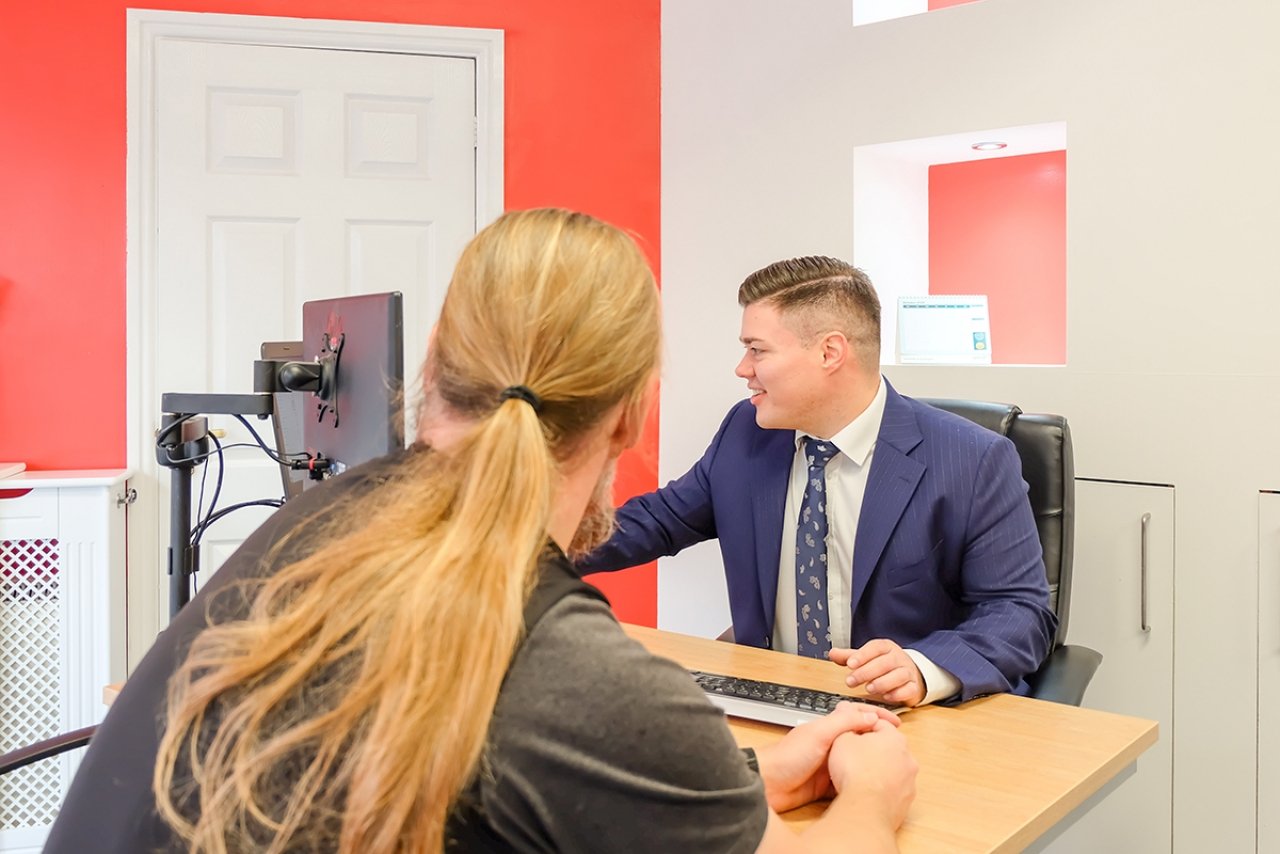
In-person observations: I observed the estate agents in their workplace
Findings
After conducting the UX field study on estate agents' interactions with tenants and their engagement with Zero Deposit, we found the following:
Estate agents face several challenges when promoting zero deposit, including tenants' lack of awareness and trust in the product and the need for better communication and education from the product's provider.
Estate agents lacked the training and support from the product's provider to better understand the product's benefits and aren’t confident in promoting it to their tenants.
Despite these challenges, estate agents who have successfully promoted zero deposit to their tenants report increased client satisfaction.
The field study gave us insight into how the agents were engaging with our products with the tenants. However, we now want to shift our focus to tenants as one of the main findings from the study was the tenant’s lack of understanding and trust in Zero Deposit.
User interview
We conducted 5 user interviews with tenants who signed up for Zero Deposit but didn’t end up purchasing the product.
The objective of the user interviews with tenants was to gain a deeper understanding of their perspectives, needs, and experiences related to renting a property and paying a deposit, as well as their awareness and perception of the zero deposit product. Here are some of the questions we asked:
What was your experience like when you rented your current or previous property?
How did you feel about having to pay a deposit when renting a property?
Can you just explain to me from your understanding how the zero deposit scheme works for a tenant? Are you aware of what happens at the end of your tenancy?
What are the factors that influence your decision to not use a zero deposit option?
Where did you end up renting? Was this through an Agent or directly from a Landlord?

User interview via Google Meet and my colleague acted as a notetaker
Findings
During the user interviews with tenants, several key themes and insights were identified. Some of the main themes that were outlined in the user interviews were:
Frustration and stress over having to pay large upfront deposits when renting a property.
Lack of understanding of how Zero Deposit actually works
Trust and transparency were important factors for tenants, as well as the cost and any hidden fees.
Overall, the user interviews highlighted a need for better education and communication about Zero Deposit and a greater focus on tenants' needs and preferences in the renting process.

Thematic analysis conducted to identify common themes
Ideation
From the research, we ever to uncover a lot of areas of improvement. However, due to timeframe and feasibility, we decided to focus on improving communication and education efforts for tenants about the Zero Deposit product, including its benefits, costs, and any potential limitations.
Workshop
I ran an ideation workshop with the product team and used the Crazy 8 exercise to help us generate a number of different ideas within a short period of time. Our goal was to ideate in different ways we can educate the potential tenants on how Zero Deposit works and help them make an informed decision when choosing their deposit option.
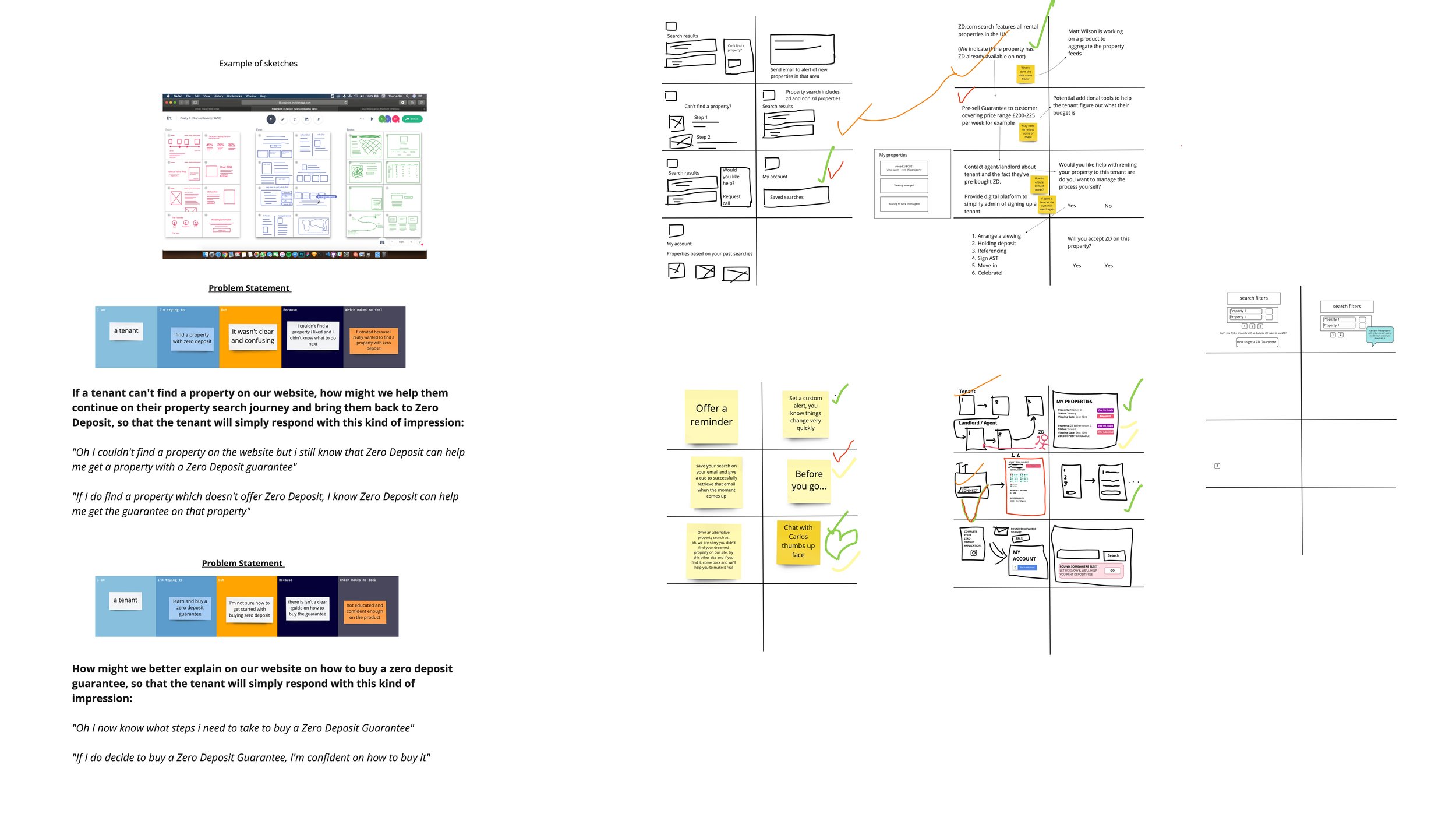
Crazy 8 exercise
After going through various ideas, we voted on which idea to take forward to the next step. We decided to go ahead with a short education guide which provides the tenants with only the relevant information, along with a comparison with a standard cash deposit. The guide will also look to provide the tenants with an estimated price through a rent calculator.
User flow
To help me visualise the tenant’s potential paths through the educational guide website journey I created a user follow.
Visualising how a tenant might move through our website allowed me to zoom out and consider the effectiveness of its overall structure.

User flow of the full journey
Design solution
I completed several rounds of ideation from low to high fidelity to explore potential solutions
Solution 1
Goal: Capture tenants who are interested in finding out about Zero deposit.
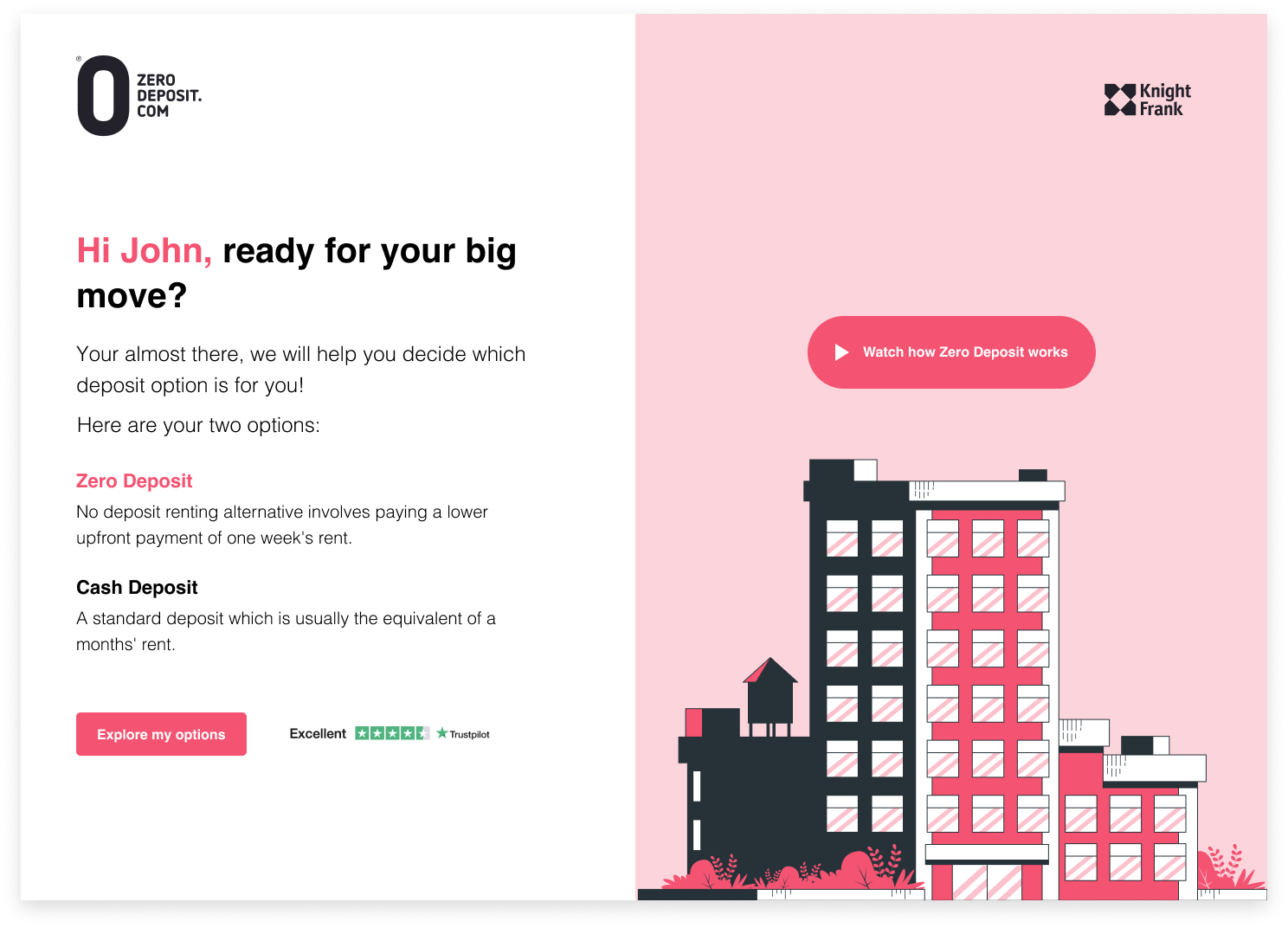
Providing tenants with a quick and easy way to either decide to explore their options or watch a video on how Zero Deposit works.
Solution 2
Goal: Provide educational guidance to tenants who don’t know about Zero Deposit and establish Zero Deposit as a trusted option for their rent deposit.
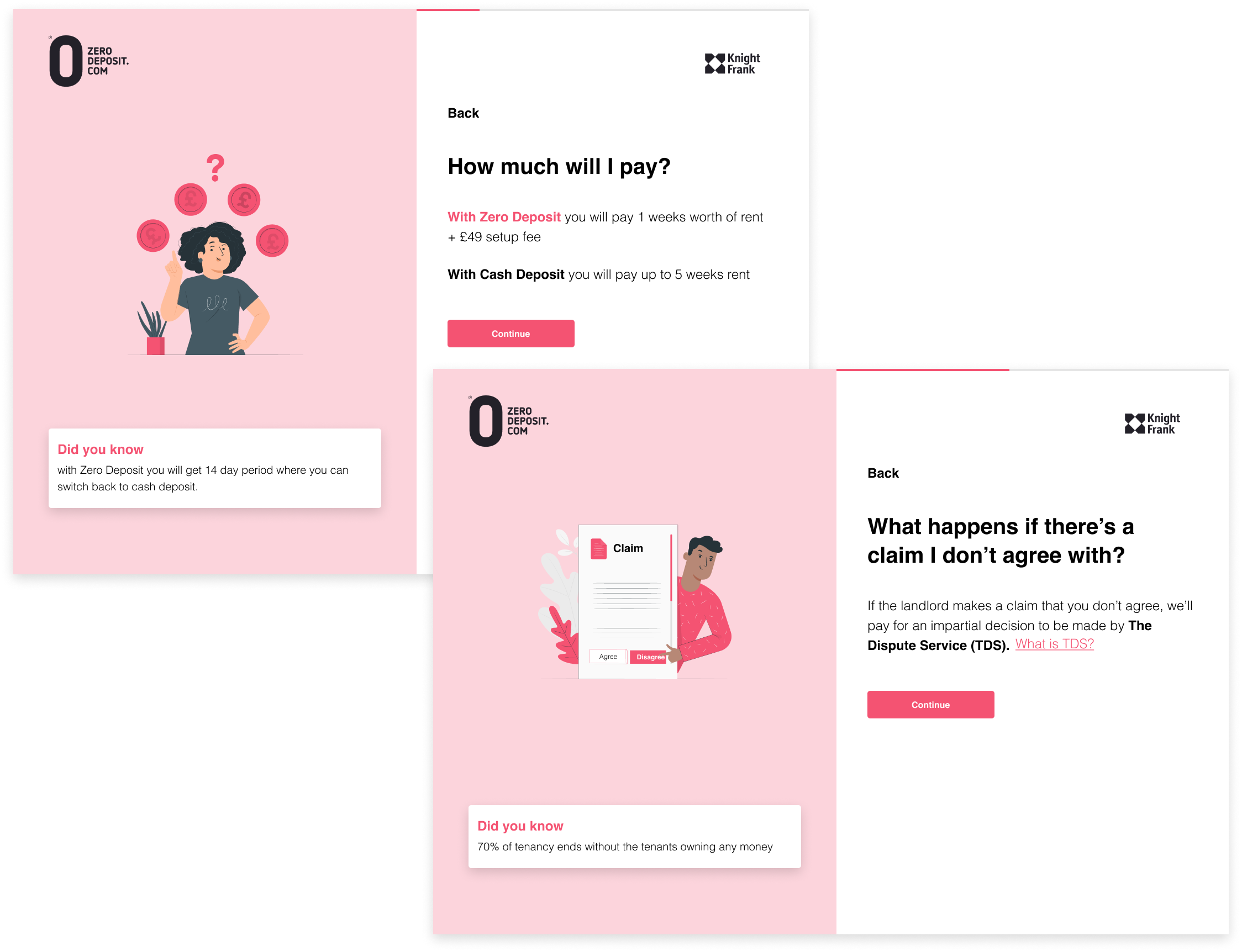
Providing key information to help tenants learn the differences between Zero Deposit and standard cash deposit. Transparently providing benefits and drawbacks of both options.
Solution 3
Goal: Provide personalised guidance and convince tenants who are ready to rent but unsure of Zero Deposit.
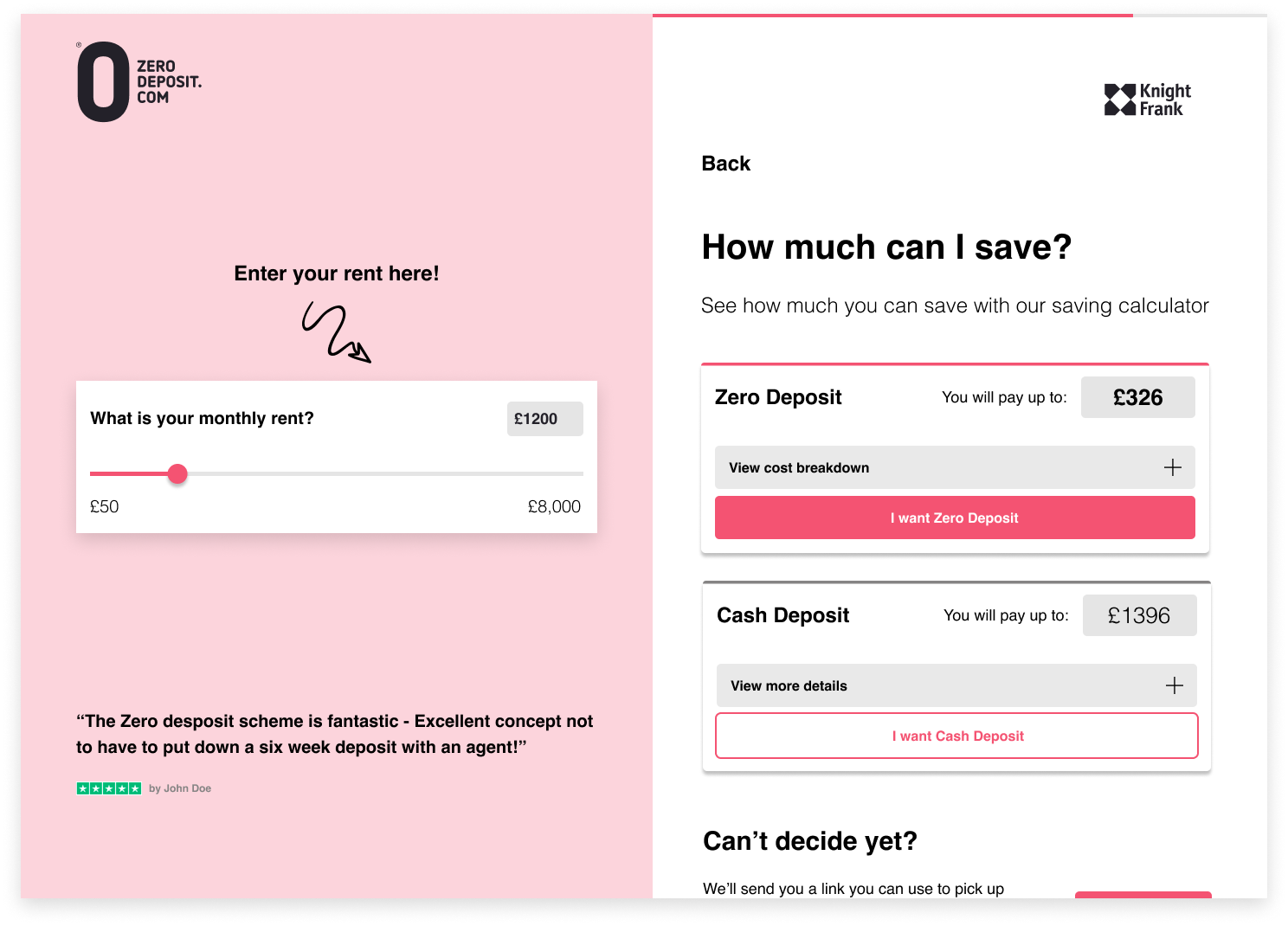
Meeting our customers where they are by giving them the chance to learn about their personal budget with the comparison calculator and also sharing testimonials that showcase the value of Zero Deposit.
User testing
Once the designs were complete I created an interactive prototype to test the journey with real end users. With the help of the UserTesting platform, we could set up and run unmoderated user testing reasonably quickly. Our objectives with the testing were:
To see if participants understand what Zero Deposit is and how it compares to a cash deposit
To see if participants understand the cost of both deposit options
To see if participants are able to understand what the next steps are after choosing a deposit option
To uncover any usability issues in the process
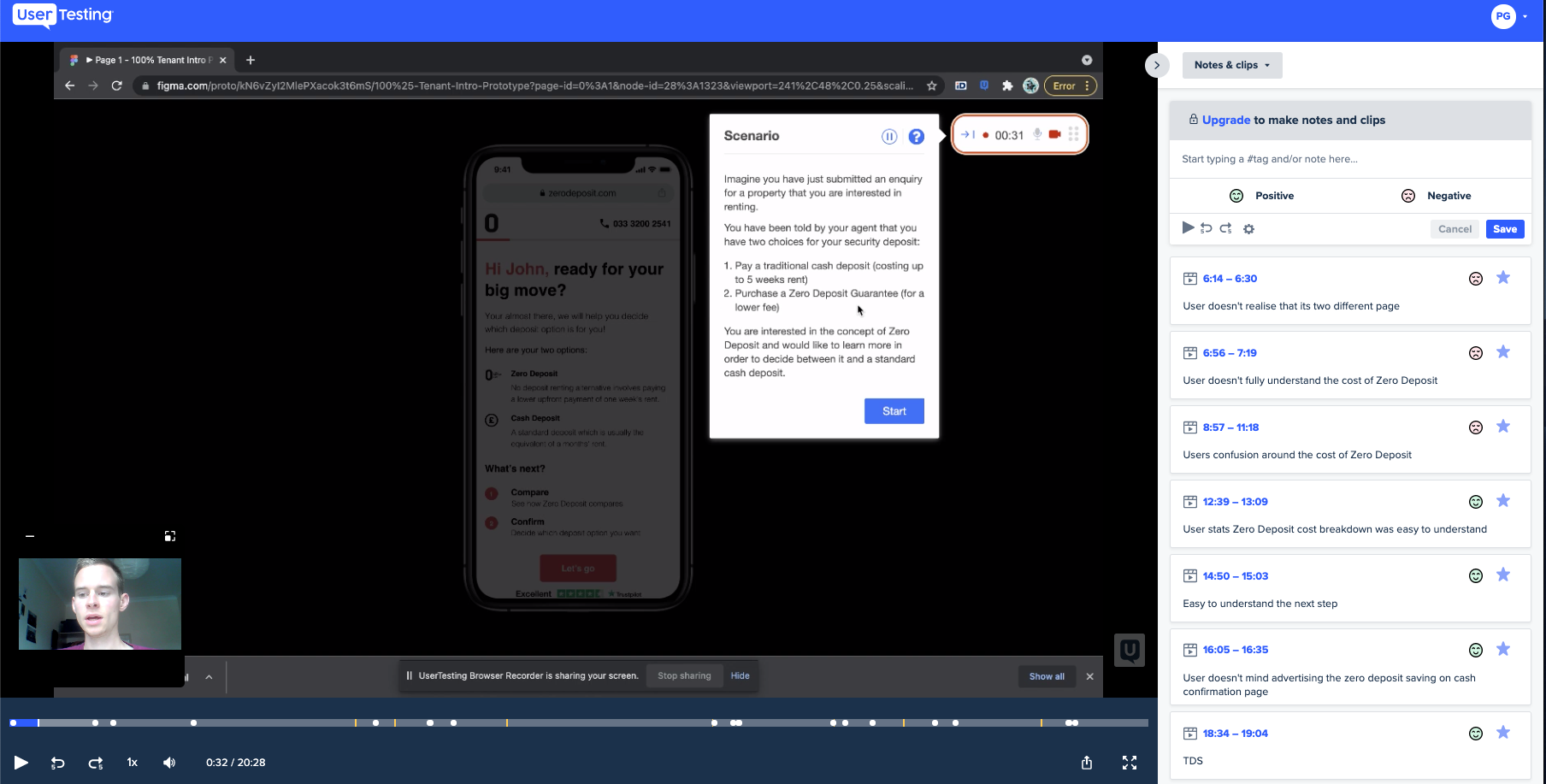
UserTesting platform allowed me to analyse the recordings and also get an access to the transcript to makes notes/clips
Running these tests helped me to assess the user experience and iron out any major design flaws before we began the development.
There weren’t any show-stopping usability issues with the current functionality but we did identify a few clear design tweaks that we made some iterations on.
Design System
During the design process, I began to produce a new design system. This system helped to maintain a consistent design language while also reducing waste by reusing components.
It was also extremely useful to Engineers when it was time to hand over the designs. Having a detailed system of components and user flows to refer to helped to speed up development.

Detailed handoff to engineers with the user flows , core functions and different states
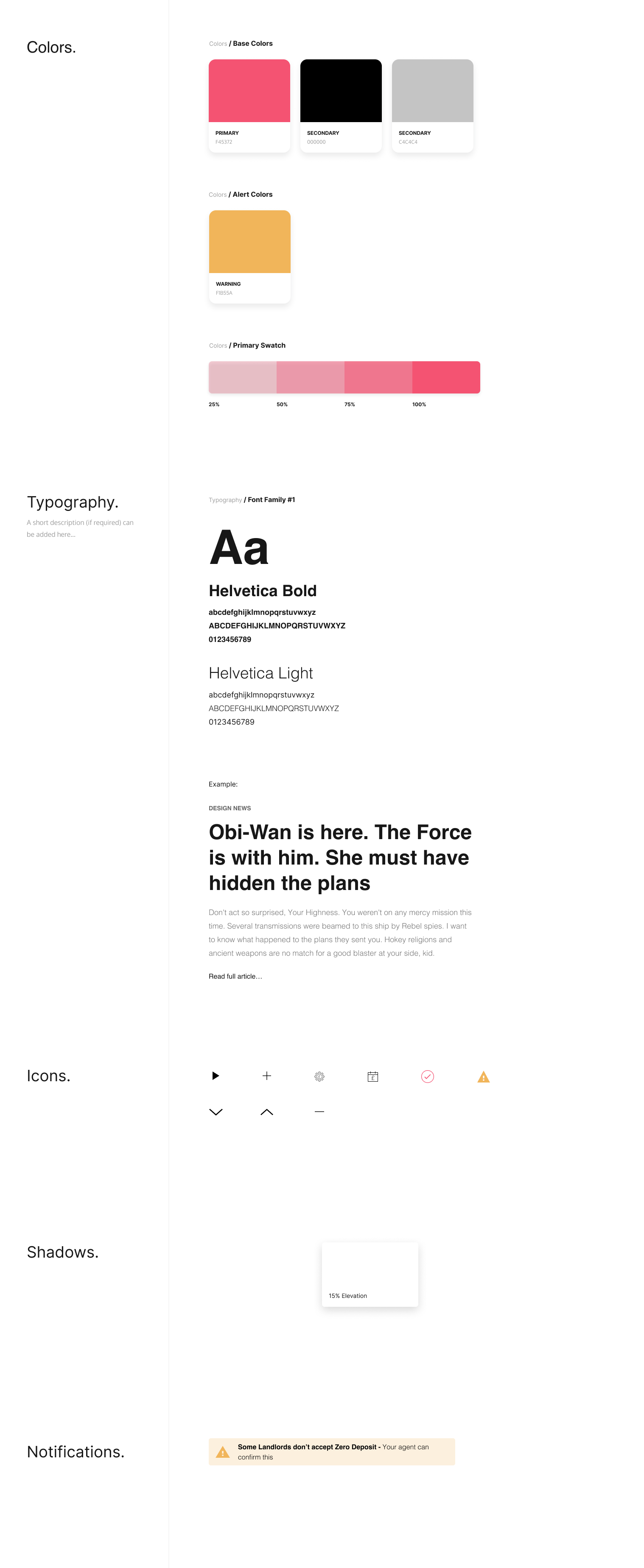
UI styleguide
Impact
For the release of the Tenant introduction project, we trialled it with 10 of our partner estate agents and in just a few months we were able to get access to some metrics:
Increase in tenant awareness and trust in the product by 50%
Increase in properties sold with Zero Deposit by 25%
Increase in revenue through partners by 18%
With the success of the trial, we are now looking for an expansion by taking the project and the successful outcomes to the rest of our partners.
Reflection
The perfect example of the power of bringing together a diverse team of people to solve a problem. By including all of the stakeholders in workshops, everyone was aligned on the direction we wanted to take and bought into the product vision.
I have also learned to trust the design process. At times, it is tempting to jump to building a solution, yet the initial steps of the process are critical in building empathy for the customer and laying a solid foundation for human-centric design. When I began to lose my way on the project, going back to revisit the process helped me regain alignment with the goal.
As the only product designer in the company, I've validated that I can lead the design vision and set product direction.
How to use different research methods to strengthen my design process and gather actionable insights.
Working closely with the development team from the start of the project helped me understand what we could achieve to design the best tenant experience.